 Loading... Please wait...
Loading... Please wait...Products
- Solar Panels
- Solar Panel Kits
- Solar Generators
- Inverters
- Inverter Monitoring
- Inverter Accessories
- Balance of Systems
- Racking and Mounting
- Rails
- Flashings
- Splice Kits
- Stopper Sleeves
- Conduit Mounts
- Attachments
- Brace Assembly
- Base Mount
- Brackets
- Bolts
- Clamps
- Caps
- L-Feet
- Washers
- Skirt
- Lugs
- Tilt Legs
- Hooks
- Stand-Offs
- Ballast Bay
- Top of Pole Mount
- Side of Pole Mount
- Flush Mount Kits
- Ground Mount Kits
- Roof Mount Kits
- Hardware Packages
- Wire Management
- Batteries
- Battery Accessories
- Charge Controllers
- Tools and Supplies
- View All Products
Solaris Blog - Microinverters
Enphase Energy Microinverters: The Complete Guide
Posted by Brandi Casey on 16th Jul 2019

Enphase Energy is a solar inverter technology innovator, founded in California in 2006. In June of 2008, they introduced the first microinverter system for solar energy systems. The rest, as they say is history, with over 20 million inverters shipped, Enphase Energy is the global leader in microinverter technology. Their microinverters boast high efficiency ratings, industry leading warranties and complete monitoring capabilities.
Enphase Energy is one of the most popular inverter options available in the US market, their quality, efficiency and reliability make them the best premium option available for microinverters for solar power systems.
The micros offer energy conversion on a modular level, providing users with deeper insight into the functionality and output of their entire solar energy system. These insights enable users to take advantage of accurate troubleshooting, making it easy to repair deficiencies or malfunctions within the system.
Microinverters offer a complete solution to installers and system owners who live in low irradiance environments, installation sites exposed to partial shading. They also provide greater overall efficiency due to their optimized capability performance within the PV array. As well as longer warranty periods.
In this complete guide of Enphase Energy microinverters, we will be looking at the following:
- Specifications and Pricing
- System Accessories
- Answering: What Are Microinverters?
- Covering Pros and Cons
- Answering: Who Should Use Microinverters?
- And Solaris Recommendations
See Here: Enphase Energy Products
Specifications and Pricing
Enphase Energy has offered a number of microinverter lines including the M Series, S Series, and IQ series. Both the M and S series has been discontinued in favor of the more advanced IQ series. We will be exploring the IQ7 series cost and specifications solely below. Specifically, we are looking at the IQ7, IQ7PLUS and IQ7X. Combined, Enphase Energy microinveters cover all solar panels available on the market today.

|
IQ7-60-2-US |
IQ7PLUS-72-2-US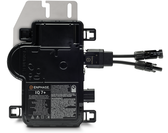 |
IQ7X-96-2-US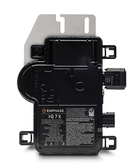 |
| Module Compatibility | 60 Cell | 72 Cell | 96 Cell |
| Wattage Range | 235w to 350w+ | 235w to 440w+ | 320w to 460w+ |
| Price/Watt | $0.56 to $0.38 | $0.64 to $0.35 | $0.51 to $0.36 |
| Starting Price | $132.70 | $149.95 | $164.00 |
| Efficiency | 96.5% | 96.5% | 97.5% |
| Dimensions | 8.34 x 6.89 x 1.19 in. | 8.34 x 6.89 x 1.19 in. | 8.34 x 6.89 x 1.19 in. |
| Weight | 2.38 lbs | 2.38 lbs | 2.38 lbs |
| Peak Power* | 250 VA | 290 VA | 315 VA |
| Voltage | 208/240 V | 208/240 V | 208/240 V |
| Specs |
Specifications |
Specifications |
Specifications |
| Warranty |
25 Year Warranty |
25 Year Warranty |
25 Year Warranty |
*Prices reflective of current pricing as of the posting of this article. Click on panel image to check current pricing.
As noted above, the microinverters are compatible with 60, 72 and 96 cell modules across their product offerings. It is important to note that the IQ7PLUS is compatible with both 60 and 72 cell modules and may be required for higher watt modules.
See Here: Module Compatibility Calculator
What Do I Need For A Complete Microinverter System?
As previously mentioned, Enphase offers excellent module level monitoring through the use of their Envoy system. They also offer a number of microinverter and install specific accessories provided by the company. Below, we have outlined the available monitoring and installation accessories provided by Enphase Energy.
| Product Image | Model Number(s) | Function | Price | Downloads |
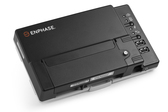
|
ENV-IQ-AM1-240 M | The Envoy communications gateway delivers solar production and energy consumption data to Enphase Enlighten monitoring and analysis software for comprehensive, remote maintenance and management of the Enphase IQ System. (Single Phase Systems) | $492.40 | Specs |
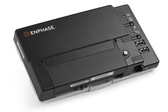
|
ENV-IQ-AM3-3P |
The Commercial Envoy gateway delivers solar production and energy consumption data to Enphase Enlighten monitoring and analysis software for comprehensive, remote maintenance and management of three-phase Enphase IQ Systems. (Three Phase Systems) | $826.20 |
Specs |
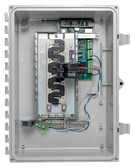
|
X-IQ-AM1-240-3 M IQ+ |
The Combiner+ with Enphase IQ Envoy consolidates interconnection equipment into a single enclosure and streamlines PV and storage installations by providing a consistent, pre-wired solution for residential applications. | $615.00 |
Specs |
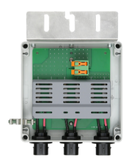
|
Q-BA-3-1P-60 |
Single phase branch terminator with 1-3 female inputs and one Q-BA-CAP. | $224.80 | |
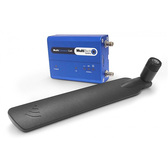
|
- CELLMODEM-01 M - CELLMODEM-03 M |
Adds a pre-configured 3G Cellular modem, SIM Card, and 5-yr or a 12-yr paid data plan to an IQ Envoy unit for direct connection to the Enlighten Monitoring Portal. |
- $378 - $793 |
Brochure |
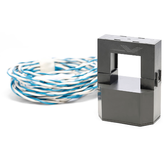
|
CT-200-SPLIT |
Delivers solar production and energy consumption data to Enphase Enlighten monitoring and analysis software for comprehensive, remote maintenance and management of the Enphase System. | $23.45 | |
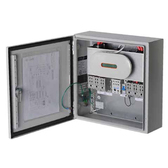
|
- Q-LCF-064-1P - Q-LCF-250-3P |
- Filter electrical noise or signals between multiple IQ Envoys and their respective communication domains in a split-phase system. - Filter electrical noise or signals between multiple IQ Envoys and their respective communication domains in three-phase systems. |
- $704.50 - $1,110.50 |
Specs |

|
- Q-12-10-240 - Q-12-17-240 - Q-12-20-200 |
- Trunk Cable, 240 Volt, for 60/72 cell 1.0m Portrait module pitch. Connector Pitch is 1.3m (51") - Trunk Cable, 240 Volt, for 60 cell 1.7m Landscape module pitch. Connector Pitch is 2.0m (78.7") - Trunk Cable, 240 Volt, for 72 cell 2.0m Landscape module pitch. Connector Pitch is 2.3m (90.5") |
- $15.60 - $18.35 - $25.65 |
|
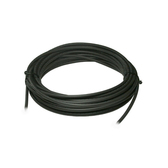
|
Q-12-RAW-300 |
Trunk Cable, Bulk Q-Cable, No Connectors, 300M Length | $1,015.60 | |
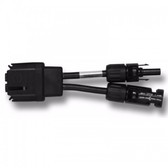
|
- Q-DCC-2 - Q-DCC-5 |
- IQ Micro inverter Replacement Adapter for Multi-Contact MC4 DC - IQ Micro inverter Replacement Adapter for Multi-Contact H4 DC |
$9.65 | |
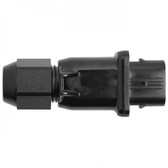
|
Q-CONN-10F |
Female Field-wire-able connector for Q Cable open connector. Pack of 10 connector bodies with 25 Female MC4 Tool crimp-able pins. | $116.65 | |
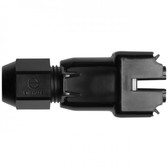
|
Q-CONN-10M |
Male Field-wireable connector for Q Cable. Pack of 10 connector bodies with 25 Male MC4 Tool crimpable pins. | $116.65 | |
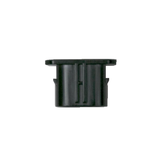
|
Q-SEAL-10 |
Watertight Q Sealing Caps (Q-SEAL-10) are female caps used to seal unused Q Cable connectors. Unused connectors generally occur where the Q Cable transitions to another module row or needs to span a gap in the array. | $3.30 | |
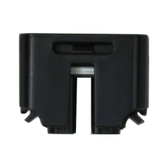
|
Q-BA-CAP-10 |
Watertight Q Sealing Caps are male caps used to seal unused Q Cable connectors. Unused connectors generally occur where the Q Cable transitions to another module row or needs to span a gap in the array. | $33.00 | |
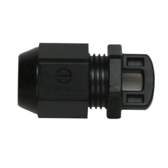
|
Q-TERM-10 |
Terminator cap for unused cable ends. | $16.70 | |
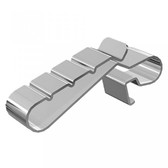
|
Q-CLIP-100 |
The Enphase Q Clip (Q-CLIP-100) is a Q cable rail mount cable management clip, holding the cable securely to most rail based racking systems. | $40.00 | |
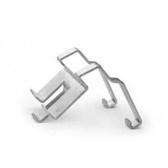
|
EFM-CC |
An effective cable management solution for the Enphase cabling system. | $2.50 | |
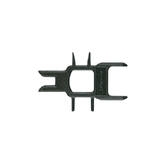 |
Q-DISC-10 |
Disconnect Tool for Q-Cable connectors, MC and Amphenol DC Connectors. | $3.30 |
*Prices reflective of current pricing as of the posting of this article. Click on panel image to check current pricing.
So, what accessories do you need to complete your Enphase Energy solar system? First and foremost, the trunk cables are required for module interconnection purposes. The model that you will need will vary depending on the orientation of your module (portrait or landscape), as well as your module cell configuration.
In order to have the ability to monitor your system, you will also need the Envoy system either as a stand-alone or in the combiner box. For those planning on purchasing a combiner box for your system, this combination is a good way to go. Note that the circuit breakers are separate from the combiner.
For installation, plan on using at least one termination cap per sub array, meaning that if you have a system with two roof faces, you will need two termination caps. The disconnect tool is also highly recommended as it will ease disconnection in the event it is required in the field.
What Are Enphase Energy Microinverters?
So, what exactly are microinverters? Microinverters operate in the same manner that large string inverters do, by converting direct current (DC) electricity to alternate current (AC) energy. AC energy is the usable energy source that is used to power electronics. In terms of solar, large string inverters convert electricity from an entire array in strings of modules, Enphase microinverters convert DC to AC on a modular level, one panel at a time.
By virtue of their technology, microinverters are much smaller than string inverters. They are installed at the back of each solar panel on your array to the racking with a bolt. Enphase microinverters are compatible with a number of solar racking manufacturers by utilizing appropriate attachment hardware.
What Are The Advantages Of Using Enphase Energy Microinverters?
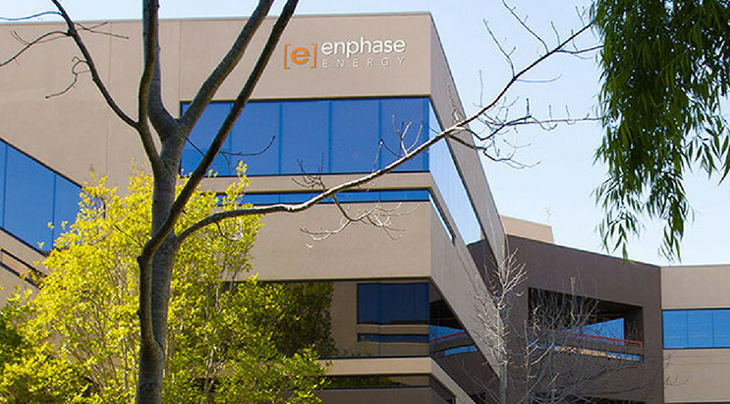
Enphase Energy Research and Development Headquarters
Microinverters can increase system efficiency by 5 to 25 percent due to their panel level operating environment. If one of more panels has a drop in efficiency, say by shading, the remainder of the system will continue to function at peak efficiency. This is not the case with string inverters, where efficiency of the entire array can be affected by an under-performing solar panel.
Enphase Energy microinverters come with a leading 25 year warranty period, on par with most solar panel performance warranties from leading manufacturers. String inverters have a 10-12 year warranty period on average, meaning that the inverter will need to be changed around the mid-point of your solar panels warranty period.
See Here: Enphase Energy Warranty Statement
If you are planning on installing only a portion of your electrical needs and adding in the future, microinverters offer unlimited expansion opportunities. This makes for easier installation and lower expansion costs than string systems which may require an inverter upgrade to achieve increased energy demand.
Enphase Energy microinverter systems offer in-depth system monitoring through the use of their Envoy system, which allows users to measure energy output of their entire system and individual modules within the system. This gives you a better overview of your energy performance, and makes troubleshooting deficiencies easy, saving you time and money.
Are There Disadvantages to Using Microinverters?
Due to the installation requirements of microinverters, they are more costly on average than traditional string inverter systems. Price increase vary depending on the string inverter manufacturer and system size but come out to be between $1,000 to $3,000 more expansive than a string system.
*Peak Power- Clipping can occur with higher watt modules with their rating of 250 VA output under ideal conditions in which most panels would be operating at 87% of their name-plate value. Most of the time modules run about 75% of their nameplate value. So, a 305w module would put out about 265w, in this case, there would be some clipping. Under normal conditions, the panel would be putting out about 228W under the micros maximum output.
Generally speaking, using a 305w module with an IQ7 microinverter would cause a small drop in efficiency around 1-2%. The rule of thumb is that solar nameplate capacity 1.25 times the inverter capacity will rarely have any production reduction. For the IQ7 this figure is 312w, while the IQ7PLUS’s figure comes out with 362w. In the end, clipping can be avoided by selecting a solar panel with appropriate wattages.
Who Should Use Microinverters?

Enphase IQ7 Microinverter Installed with Enphase Aggragator
Enphase Energy microinverters can be used in a number of applications and are recommended for systems set for future expansion, low irradiance areas, non-south-facing roofs, roofs with obstructions and people who are seeking higher efficiency for their solar energy system. Another factor that most consider when selecting an inverter option is cost. If the additional cost of a microinverter system makes sense for your energy needs, then you can greatly benefit from their improved efficiency and highly integrated monitoring.
Microinverters can be used in both roof-top and ground mount systems, making them a great solution for both residential and commercial installs. Wiring the microinverters is simple with their portrait or landscape trunk cables, making them an easy to use solution for DIY installers. In addition, the combiner box with Envoy provides you with an easy balance of systems and monitoring solution.
Solaris Recommendations
If you have shading or low irradiance at your installation site, using Enphase Energy microinverters in your system is a great solution for you. Their improved efficiencies and long warranty period make them an ideal candidate to improve your total energy generation and improve your ROI period. The warranty period of 25 years ensures that you will not need to spend money on new inverter equipment halfway through your panels power warranty.
For installers with an ideal site conditions (south facing, no shade, high sun hours), the additional cost of the system may not be for you. That being said, you will also benefit overall from the longer warranty period provided by Enphase Energy.
Although monitoring is optional with Enphase, we highly recommend that installers take advantage of their monitoring platform to measure system performance and quickly troubleshoot any lags in efficiency, as doing so can save you a great deal of money in the long term - negating the need to pay high prices for someone to inspect the entire array, and ultimately, get the most of out of your solar array.
Keep in mind the possible disadvantages of using high watt modules with Enphase as clipping can become an issue when exposed to the conditions noted above. We recommend sizing down your module if you believe that the system will be exposed to ideal sun conditions the majority of the time. If you require larger watt panels due to limited roof space, the micros may still work, run a few numbers to see what setup will yield the most energy and make the most sense for your energy goals.
Read Here: SMA Smart Modules Complete Review



